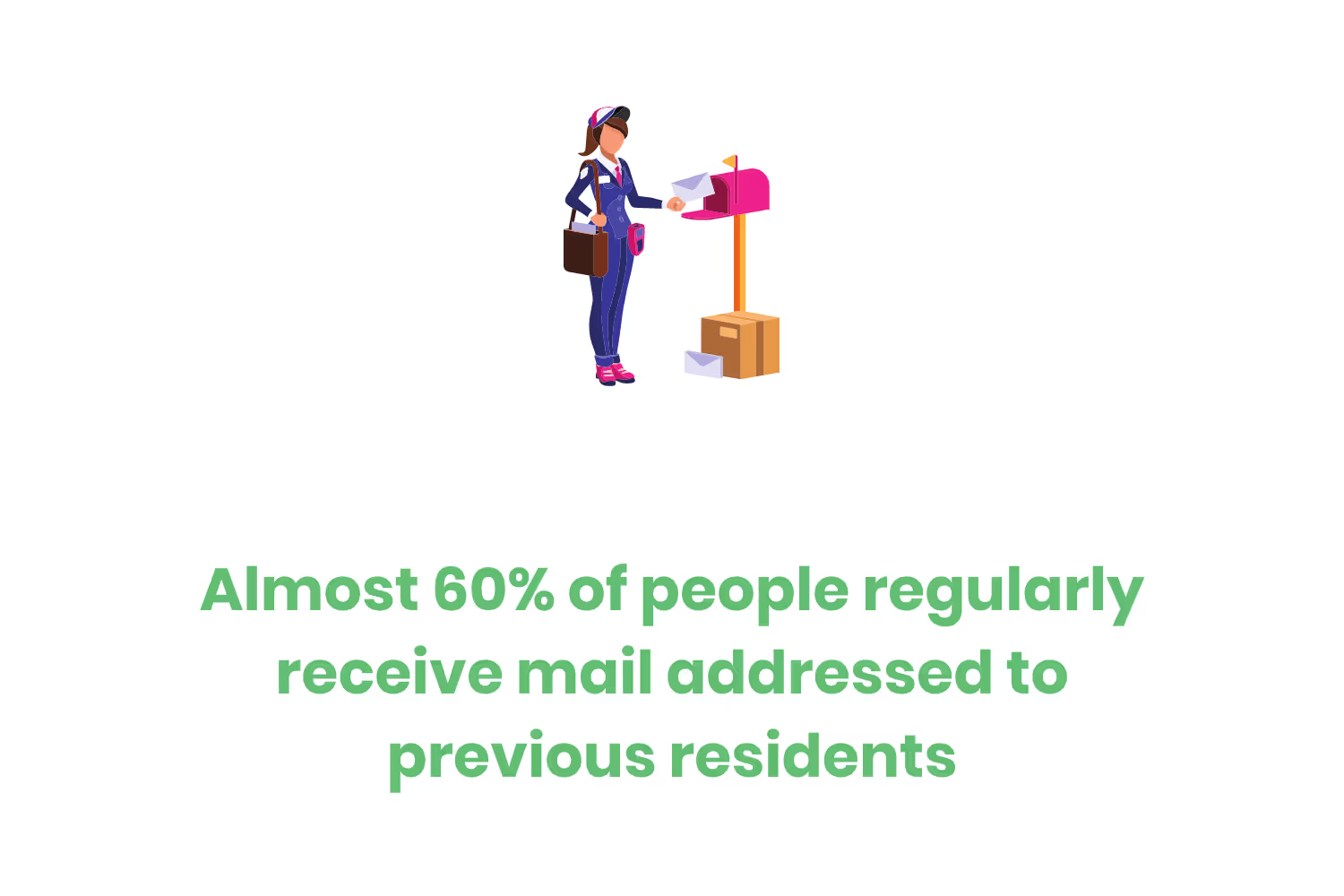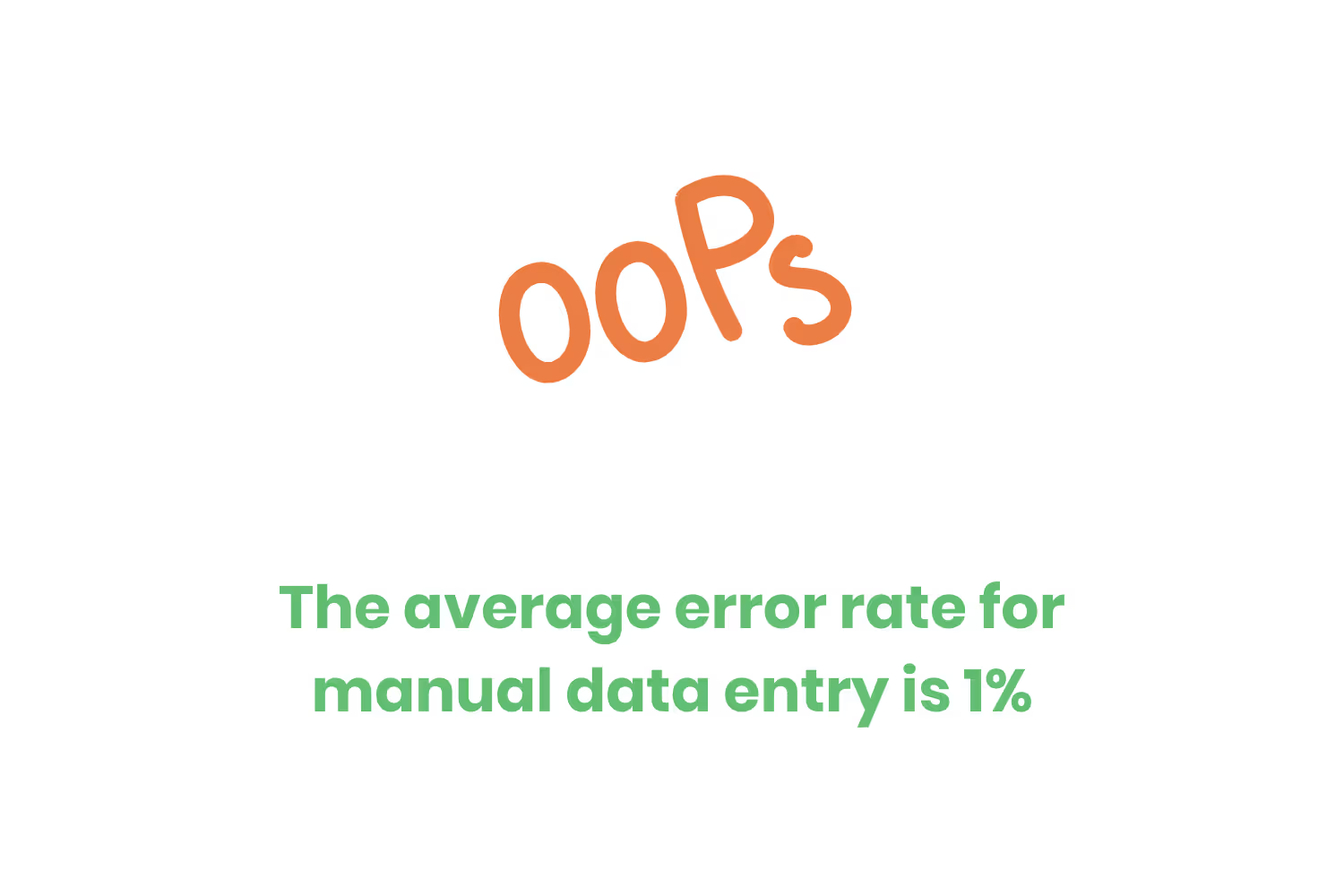A Practice's Guide to Handling Medical Bills Sent to The Wrong Address
Sending medical bills to the wrong address is a direct violation of the Health Insurance Portability and Accountability Act (HIPAA). But when this happens to your healthcare organization, what should you do?

I guarantee that you’ve received mail at your house that wasn’t addressed to you. I’m so confident about this because almost 60% of people regularly receive mail addressed to previous residents.
The majority of the time, this isn’t that big of a deal. You get it, see it’s not addressed to you, grab a pen or permanent marker, write “Return to Sender” on the envelope and place it back in your mailbox.

It isn’t that much of a nuisance unless it’s a mail marketing ploy. Sometimes organizations that the previous resident used to purchase on a monthly basis take note of their new address. Yet they’ll still send marketing materials to their customer’s old address in the hopes of enticing the new residents. What I’m referring to in this case are those pesky parcels addressed to the previous resident “or current resident”. I have a strong disliking passion for those envelopes, but since they aren’t totally related to this blog post, I digress.
Anyway, the majority of the mail that gets sent to the wrong address goes through the process I described before my rant about marketing mailers.
That’s the best-case scenario. Even though it’s a federal crime to do what I’m about to describe, it usually isn’t that big of a deal if the current resident opens the envelope in error.
Even though the USPS spends around $1.5 billion every year on undeliverable mail.

But sending mail to the wrong address is a nightmare for healthcare organizations. Unless the practice sent something like a new doctor announcement postcard, they most likely sent one of their patient’s medical bills.
Medical bills contain some of the most sensitive information on the planet. As such, the Department of Health and Human Services (HHS) considers medical bills as protected health information. In other words, sending medical bills to the wrong address is a direct violation of the Health Insurance Portability and Accountability Act (HIPAA).
But when this happens to your healthcare organization, what should you do?
Get To The Bottom of What Happened
Before you do anything else, you need to figure out what happened to cause the sending error.
Do you have a statement printing and mailing services vendor? Although they’re saving you a ton of time by automating your patient billing process, they might’ve experienced a printing error.
Does that same vendor offer a portal to your employees to manage addressing and corrections prior to sending? If so, it’s possible that one of your team members made a typo or address error within that system.
If you don’t have a print and mail services vendor, then you’re doing the process in-house manually. Here I want to point out that the average error rate for manual data entry is 1%.

In other words, sending medical bills to the wrong address has a much higher chance of happening if you rely on in-house, manual processes.
Nevertheless, if this process describes you, you’ll need to take a look at all of the data entries your employees made and go over everything with each of them in person.
If you find out that the error was the result of a mistake by one of your employees, you don’t want to shame them. Instead, re-train them on your medical bill sending process and compliance policies. After all, sending medical bills to the wrong address is a HIPAA violation.
Contact The Affected Patient
After you’ve figured out all of the details about the incident that occurred, the next step is to notify the affected patient about what happened.
This goes without saying but you don’t want to send them a letter through the mail telling them that their statement went to the wrong address. Think about how silly that would make you look.
You could figure out how to send them an apology letter but not how to send them their bill?
Instead, you should contact them via a phone call and an email.

Due to the sensitive nature of what occurred, a direct phone call is the safest and best way to tell the affected patient that their medical bill went to the wrong address.
If they don’t pick up and the call goes to voicemail, you should leave one. However, don’t overshare during the recording as you don’t know who might listen to it once it’s sent. Instead, say that you’re calling them regarding their recent appointment with you.
Whether or not your client answers, though, doesn’t change the fact that you should email them about what happened as well for good measure. The same rule of thumb about oversharing applies here as well.
After you’ve written out the email, attach an official statement document from your organization that acknowledges what happened and further explains it.
Adjust and Resend The Statement
As a good practice, you shouldn’t proceed with anything further until you’ve heard back from the affected patient. Ensure that you ask them to confirm their address before you do anything else.
Even if the typo in your system is obvious, you don’t want to assume that you’ve corrected the address without verifying it. If you don’t, you might end up doubling down on the situation you’re trying to fix, which isn’t a good look.
Once you’ve confirmed the address with your client, update it within your system so that there’s no confusion after future appointments.
If the statements you send out follow industry guidelines, you likely use a double window envelope so you don’t have to physically write the addressee.

As a result, though, you’ll have to make sure that you update the statement to include the new, confirmed address.
Remove Derogatory Reports
Let’s say you sent out a medical bill to the wrong address. A month later the bill’s due date passes and you still haven’t received any form of payment from that patient with an outstanding balance.
Over the course of the next couple of months, you’ll send past due letters and notices. Maybe they just forgot about it. Of course, since you never sent any of this information to the right address in the first place the client never received any of this.
At the end of the lifecycle of their statement, you have no choice but to send it to a collections agency. After all, you’re not a professional debt collector and you don’t have enough time throughout your day to spend all of your efforts trying to do so.
When a medical bill goes to a collections agency, it has an effect on the patient’s credit score. That may seem like a harsh punishment but the bottom line is that by your patients not paying your bills, you won’t be able to continue to keep your doors open.

In this scenario, however, the affected patient never really had a chance to pay what they owe in the first place and neither party realized this. The patient eventually finds out about their medical bill placed in collections through their credit report.
Once they do, they immediately call your practice to figure out why they never saw this bill before it went to a debt collector.
The phone call that happens isn’t a pleasant one, your client isn’t happy with this fiasco and you’re trying to get to the bottom of it ASAP. Once you realize that the statement went to the wrong address, you’ll have to contact the collections agency, void the statement charge and ask them to remove any derogatory information from the patient’s credit score.
Correct It for The Future
Sending a medical bill to the wrong address might not seem like it’s not that big of a deal on the surface. However, once you unpack how it affects every party involved, you quickly realize that it is almost a nightmare situation.
There’s always going to be a ton of moving parts in your statement process, regardless of whether or not you’re using a print and mail vendor or doing everything in-house.
In other words, it’s almost guaranteed that you’re going to experience a situation where one of your client’s bills goes to the wrong address.

Even though there are real consequences you could face from the HHS since this is technically a HIPAA violation, you won’t have to report it unless what happened affected 500 or more individuals.
Although that may sound like a relief, any patient that this happens to still has the right to report what happened to the HHS. You shouldn’t discourage this, either. After all, you’re a covered entity. It’s your responsibility to put forth the best effort to protect the private data you work with on a daily basis.
If you tell an affected client that they have the right to report what happened to them and they move forward, the HHS will launch an investigation. During this investigation, they’re going to take a look at not only how you handled the breach, but also what steps you have in place that could’ve prevented it.
In other words, if you don’t have any processes or safeguards to prevent sending medical bills to the wrong place, you’ll face some consequences.
Although safeguards aren’t foolproof, they’re a step in the right direction toward ensuring the protection of your patients. Further, if something were to happen they’ll help guide you through a step-by-step, calculated response that will save you time and help keep affected patients at ease.
Look for Address Correction Services
After everything, you should seek out help from print and mail service providers, even if you handle the medical billing process in-house.
I’ve subtlely hinted at what I’m about to go over a few times throughout this blog post, but it’s so important that it deserves its own section.

Leading print and mail services providers offer an add-on service that compares your patient’s addresses through USPS databases and skip-tracing technology called address correction. In a nutshell, this software integrates with your medical record system then automatically verify and correct your patient’s address prior to sending your medical bills.
It’s a best practice to run your client’s addresses against this software on a consistent basis and prior to sending anything out.
Conclusion
Sending medical bills to the wrong address is a headache. It affects your practice and your patients. You have a duty to handle the situation due to HIPAA and your client has to work with you throughout the process or risk having a lower credit score.
Worse, they’re almost guaranteed to happen at some point throughout your organization’s lifetime since there are so many moving parts that go into the patient billing process.
If you’re going to walk away from this blog post with something, the biggest takeaway is to make sure that you have some sort of process in place. It will not only help prevent mailing to the wrong address from happening but also guide you through a calculated response.
Emphasize your product's unique features or benefits to differentiate it from competitors
In nec dictum adipiscing pharetra enim etiam scelerisque dolor purus ipsum egestas cursus vulputate arcu egestas ut eu sed mollis consectetur mattis pharetra curabitur et maecenas in mattis fames consectetur ipsum quis risus mauris aliquam ornare nisl purus at ipsum nulla accumsan consectetur vestibulum suspendisse aliquam condimentum scelerisque lacinia pellentesque vestibulum condimentum turpis ligula pharetra dictum sapien facilisis sapien at sagittis et cursus congue.
- Pharetra curabitur et maecenas in mattis fames consectetur ipsum quis risus.
- Justo urna nisi auctor consequat consectetur dolor lectus blandit.
- Eget egestas volutpat lacinia vestibulum vitae mattis hendrerit.
- Ornare elit odio tellus orci bibendum dictum id sem congue enim amet diam.
Incorporate statistics or specific numbers to highlight the effectiveness or popularity of your offering
Convallis pellentesque ullamcorper sapien sed tristique fermentum proin amet quam tincidunt feugiat vitae neque quisque odio ut pellentesque ac mauris eget lectus. Pretium arcu turpis lacus sapien sit at eu sapien duis magna nunc nibh nam non ut nibh ultrices ultrices elementum egestas enim nisl sed cursus pellentesque sit dignissim enim euismod sit et convallis sed pelis viverra quam at nisl sit pharetra enim nisl nec vestibulum posuere in volutpat sed blandit neque risus.

Use time-sensitive language to encourage immediate action, such as "Limited Time Offer
Feugiat vitae neque quisque odio ut pellentesque ac mauris eget lectus. Pretium arcu turpis lacus sapien sit at eu sapien duis magna nunc nibh nam non ut nibh ultrices ultrices elementum egestas enim nisl sed cursus pellentesque sit dignissim enim euismod sit et convallis sed pelis viverra quam at nisl sit pharetra enim nisl nec vestibulum posuere in volutpat sed blandit neque risus.
- Pharetra curabitur et maecenas in mattis fames consectetur ipsum quis risus.
- Justo urna nisi auctor consequat consectetur dolor lectus blandit.
- Eget egestas volutpat lacinia vestibulum vitae mattis hendrerit.
- Ornare elit odio tellus orci bibendum dictum id sem congue enim amet diam.
Address customer pain points directly by showing how your product solves their problems
Feugiat vitae neque quisque odio ut pellentesque ac mauris eget lectus. Pretium arcu turpis lacus sapien sit at eu sapien duis magna nunc nibh nam non ut nibh ultrices ultrices elementum egestas enim nisl sed cursus pellentesque sit dignissim enim euismod sit et convallis sed pelis viverra quam at nisl sit pharetra enim nisl nec vestibulum posuere in volutpat sed blandit neque risus.
Vel etiam vel amet aenean eget in habitasse nunc duis tellus sem turpis risus aliquam ac volutpat tellus eu faucibus ullamcorper.
Tailor titles to your ideal customer segment using phrases like "Designed for Busy Professionals
Sed pretium id nibh id sit felis vitae volutpat volutpat adipiscing at sodales neque lectus mi phasellus commodo at elit suspendisse ornare faucibus lectus purus viverra in nec aliquet commodo et sed sed nisi tempor mi pellentesque arcu viverra pretium duis enim vulputate dignissim etiam ultrices vitae neque urna proin nibh diam turpis augue lacus.



![[ANSWERED] What is a Long-Term Care (LTC) Pharmacy](https://cdn.prod.website-files.com/67e2b8210878abcba6f91ae6/68d687806a075a1cf64659b0_WhatisLongTermCarePharmacy_925.avif)
